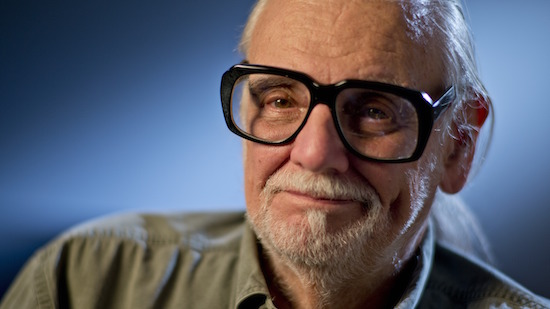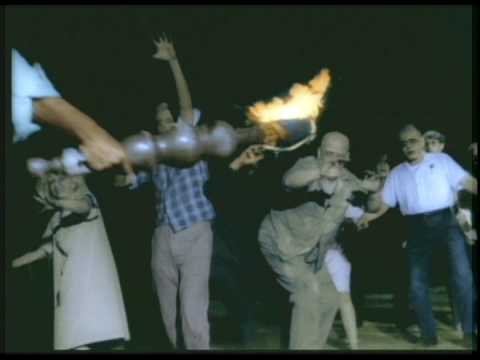Upon its release in April 1979, New York Times critic Janet Maslin walked out of George A Romero’s horror classic Dawn of the Dead after just 15 minutes. Having later said “I justifiably took a lot of heat for walking out. From then on I learned to sit through anything” Maslin’s contempt proved something of a glitch amidst a cloudburst of rave reviews and towering box office takings. Ten years on from arriving in masterfully divisive fashion via the seminal Night of the Living Dead – arguably independent film’s finest mid-point between prosthetic limbs and political commentary – Romero had boldly reasserted his standing as an auteur that melded bloodshed with socio-political subtext like no other.
Having been gifted an 8mm camera for his fourteenth birthday back in 1954, Romero would enroll at Suffield Academy in Connecticut and Carnegie Mellon University, where he produced a series of crude yet promising shorts that betrayed a keen eye for blurring the contours of satire, sci-fi and latent social consciousness. A move that saw him hone his style and cultivate a network of like-minded contenders, he later co-formed The Latent Image and worked on various “sponsored” films and television commercial in the early-to-mid 1960s. An artistically thankless task from the outside looking in, perhaps, yet working within these realms proved a critical springboard for Romero breaking away with the know-how to exact his own, considerably more gruesome vision.
Flanked by the likes of Image Ten founders Russell W. Streiner, Karl Hardman and John Russo on production duties, Romero – like many of the genre’s great dreamers – navigated financial constraints and technical limitations with extraordinary impudence on Night of the Living Dead. Filmed across June to December 1967 on 35mm black-and-white film, some critics equated its guerilla-style mise-en-scene to something akin to a wartime newsreel or documentary film. Whilst incredibly provocative, Romero’s flagrant ode to mass disillusionment proved – just like The Texas Chainsaw Massacre and Halloween in the years following it – an instant classic of extremity in film that, despite all the off readings and kneejerk censure, was the overdue catalyst for Romero’s six-decade demarcating and redefining the modern horror genre.
Having said "if nobody walked out, it wouldn’t be the movie I wanted to make”, Romero likely looked at the likes of Janet “15 Minutes” Maslin as heroes – necessary indicators in his aim to utilise extremity to transmit some hard, nigh on unwatchable truths. Forging something completely new by way of carnage and caricature, Dawn, Night and 1985’s Day of the Dead – which found the director taking a step back on the carnage to emphasis character development – took the vague concept of the zombie and posited it as a multi-layered concept that mirrored both interpersonal paralysis and the wider impact of social stasis, as framed by empty consumerism, the trappings of modernity and race relations, before every other B movie bomb followed suit to much less incendiary effect.
But, of course, Romero’s sizable imprint on modern cinema extends far beyond the low-budget zombie projects he spearheaded from the off. Much like fellow indie horror forerunner John Carpenter, he resisted obvious pressures to regurgitate and peddle solely to whim, excavating new territories not necessarily inhabited by flesh-eating automatons. From the tense and politically aware The Crazies and the divisive yet solid Creepshow (featuring Stephen King in his debut screenwriting role, no less) to self-described feminist horror movie Hungry Wives and the critically-acclaimed Martin – a horror comedy doubling up as the first collaboration between Romero and special effects master Tom Savini – the Godfather of the Dead helped transform the landscape of contemporary pop culture not merely via the the gore he’s best known for, but also by helping renew what made it so revolutionary in the first place.
Despite a handful of tepid releases and – lest we forget – some outright duds (Survival of the Dead, anyone?) George A Romero’s passing presents a new opportunity to view his legacy as a full journey of rare, devil-may-care trial and error, rather than a series of iconic masterstrokes divvied by a series of near misses and the odd classic flop. Having astutely said "a zombie film is not fun without a bunch of stupid people running around and observing how they fail to handle the situation" he simultaneously threaded malevolence with satire and black humour, just as he did guts with some moments of bona fide cinematic glory. For someone who rarely offered up straightforward answers to what he often maintained were clear-cut allegories in his work, his legacy will always be best honoured by always sticking with it beyond those first fifteen minutes.



